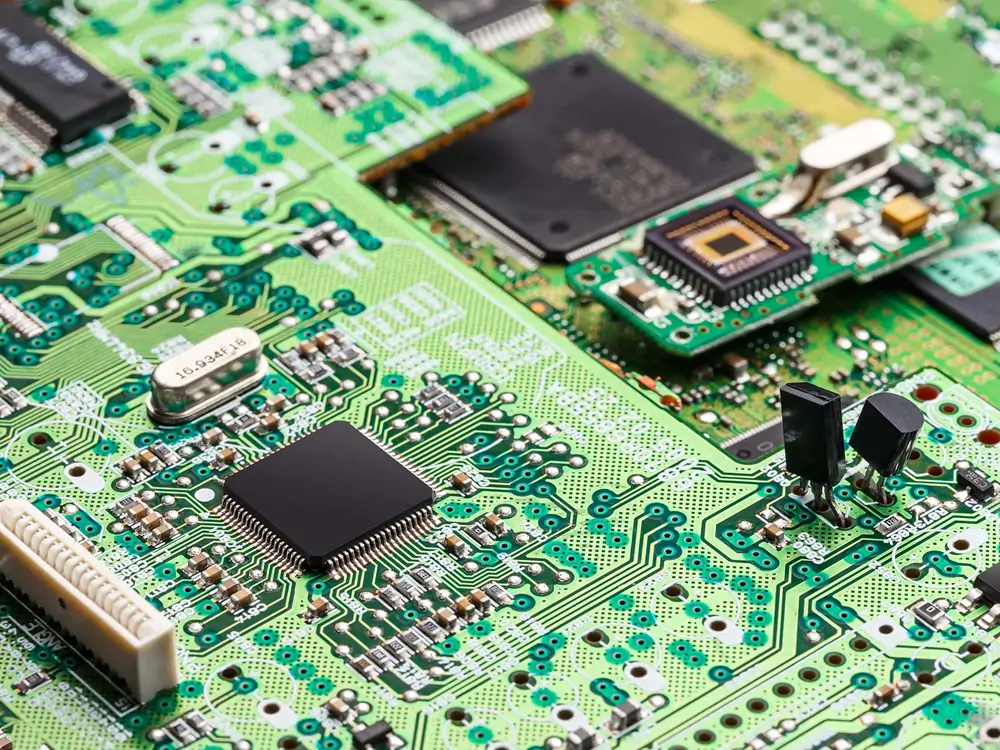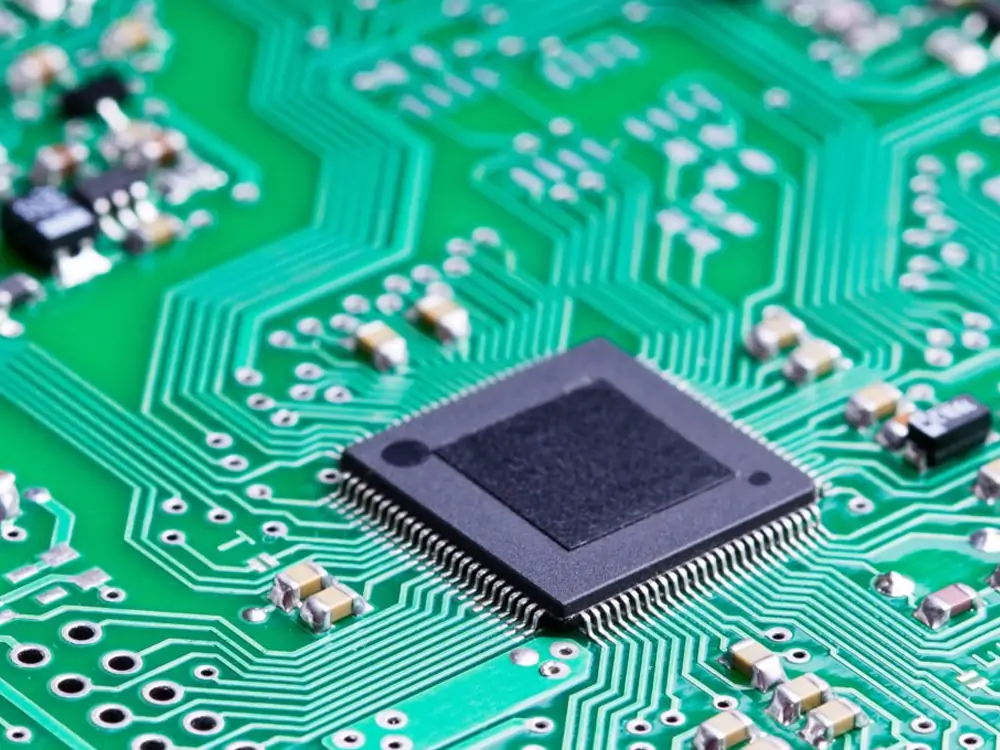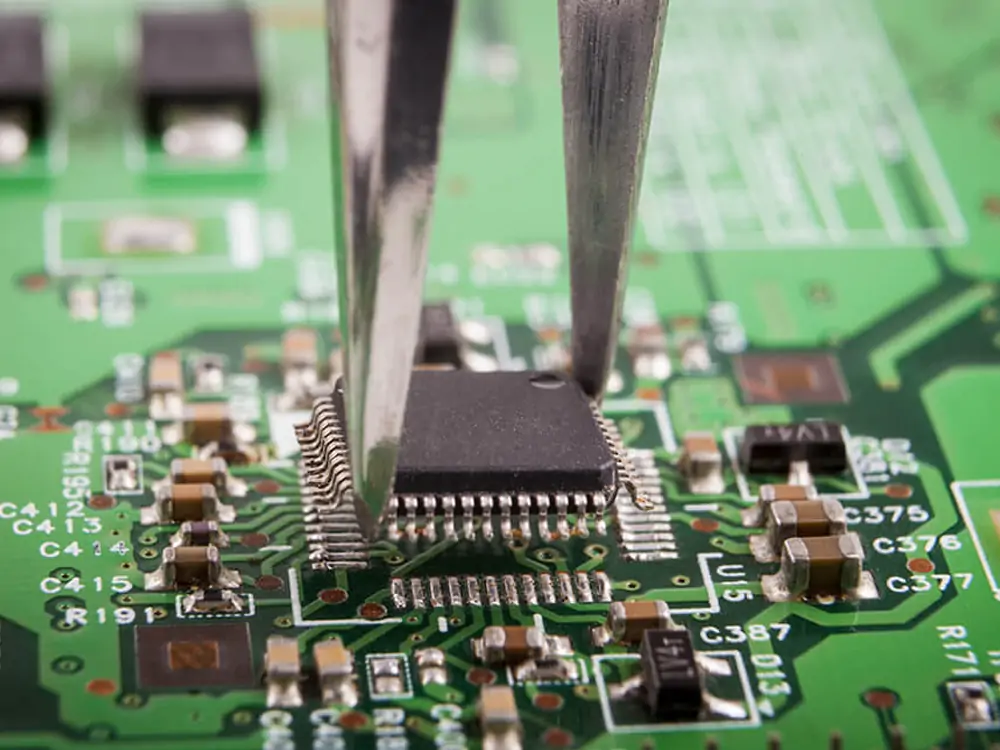FR-4 is the most widely used substrate material for printed circuit boards. But exactly what properties make it such a sought-after PCB base?
Interestingly, many people involved in PCB manufacturing do not have a clear understanding of the properties of FR-4. Many do not know its advantages over other PCB substrates, such as FR-1, G-10, Alumina, and PTFE.
The goal of this post is to shed light on the properties and use cases of FR-4 as base material for printed circuit boards. Hopefully, this discussion will help you make informed decisions.
What is FR-4?
FR-4, which refers to both a standard rating and a name, is a glass-reinforced epoxy laminate material. FR stands for flame retardant and 4 refers to the rating of the material. It is a composite material composed of a fiberglass layer woven into a rigid, flame-resistant epoxy resin.
FR-4 is widely used as a substrate material, or in other words, the primary insulating backbone of printed circuit boards. Low cost, high dielectric strength, and moisture resistance are some notable advantages of FR-4. These features make FR-4 the go-to substrate material for printed circuit boards. A sophisticated circuit may be printed on one or both sides of an FR-4 board.

Factors to Consider When Selecting the Thickness of FR-4 Printed Circuit Boards
An electrical engineer working on a PCB project involving the use of a laminate board must specify the thickness of the board. Depending on the setting of the board, its thickness may be measured in inches, millimeters, or thou—which refers to a thousandths of an inch. However, it usually ranges from 10 thou to 3 inches.
Electronic gadgets are getting smaller every passing year. Therefore, the thickness of a PCB board largely determines the size, design, precision and aesthetic appeal of a gadget. Here are some factors to keep in mind when determining the thickness of a laminate board:
Space
Thinner FR-4 boards are more in demand than thicker ones. And the reason is obvious: gadgets such as Bluetooth accessories and USB connectors are getting smaller. Because they save space, smaller and thinner FR-4 boards are preferable even for larger projects.
Connections
A PCB design can be one-sided or two-sided. An edge connector, which connects the two sides, is required for a two-sided design. An issue with the connector’s mating portion can damage the PCB. That’s a reason why the material of a circuit is not chosen until the circuit has been designed.
Flexibility
Depending on the particular application, the flexibility of an FR-4 board may or may not be a desirable feature. Thinner boards tend to be more flexible. A product that is intended to be regularly flexed or stressed requires a flexible board. Devices used in automotive and medical sectors often require flexible boards.
When it comes to the PCB manufacturing process, however, flexibility is often an undesirable feature. This is in part because it makes assembly more complicated. A soldering machine can cause a flexible board to flex and get partially soldered. This flexing can damage the connections and components placed on the board.
Design
The thickness of an FR-4 board must be determined by the design requirements of the board. Thin boards are not better for all types of projects. For instance, a design that features grooves requires a relatively thick board.
Impedance Matching
For a multi-layered board, thickness is important because the board itself serves as a capacitor. The dielectric, which determines capacitance to some extent, is determined by the thickness of the board.
Compatibility of components
Many components, such as some through-hole components, are compatible only with a certain range of thickness. That’s why component compatibility is an important factor to consider when determining the FR4 PCB thickness.
Weight
The weight of a PCB largely depends on the thickness of the FR-4 board. Manufacturers of lighter products prefer thin boards.

Is FR-4 the Right Material for Your PCB Project?
For most electronics applications, an FR4 substrate is the default choice. The popularity of FR-4 is indebted to the material’s strength, low cost, and reliability. But it’s not the best material for all applications. High-frequency laminates are preferable for high-frequency designs.
Here are some key factors to keep in mind when choosing between the FR4 material and a high-frequency laminate:
- Cost: FR-4 is cheaper than high-frequency materials. Therefore, if cost is a concern for a manufacturer, FR-4 is definitely a better option than a high-frequency laminate.
- Signal loss: Due to a higher dissipation factor, FR-4 has a higher signal loss, which is a problem in high-frequency situations. If FR-4 is used in such an application, there will be more signal loss in the circuit. While FR-4 has a Df of around 0.020, a typical high-frequency laminate has a Df of around 0.004.
- Impedance stability: For high-frequency designs and larger circuits, performance depends on impedance stability. High-frequency laminates are preferable for maintaining the stability of dielectric constant. This value, in turn, determines impedance stability.This is because with FR-4, as the temperature changes within the board, the Dk value varies across the area.
- Temperature management: Changes in temperature affects the dielectric constant of the base material. The extent depends on the constant’s thermal coefficient. For each degree Celsius change in temperature, FR-4 has a thermal coefficient of around 200 parts per million. With high-frequency laminates, this number is around 40 parts per million. While this difference does not look that big, it’s an important factor. It matters particularly for boards that are intended to be used in relatively hot environments.
- Dielectric constant: In some applications, the dielectric constant of the circuit board can be a crucial feature. In a high-frequency circuit, the size of the transmission lines largely depends on the dielectric constant. The circuit size is proportional to the size of the transmission lines. A material with a high dielectric constant is preferable for a smaller board. While the Dk values of high-frequency materials range from 6.15 to 11, FR-4 has a Dk value of about 4.5. This low Dk value can, in some cases, make FR-4 unsuitable for a small PCB board.
- Operational environment: When choosing a circuit’s base material, consider the environment. High-frequency laminates provide a higher level of temperature and moisture resistance. That’s one of the reasons why some high-end designers prefer high-frequency laminates.

Wrapping Up
Consider all relevant factors when choosing the base material of a circuit board and determining its thickness. While FR-4 has advantages over high-frequency laminates, it’s not a great substrate material for all types of applications.
In most cases, you will find FR-4 pretty convenient because it is cheap, and available in a wide range of sizes and thicknesses. But it’s important to weigh the advantages and drawbacks, and choose the right circuit board base material for your project. We hope now you are better prepared to make a decision.
